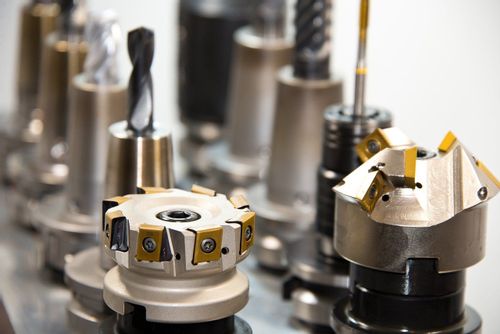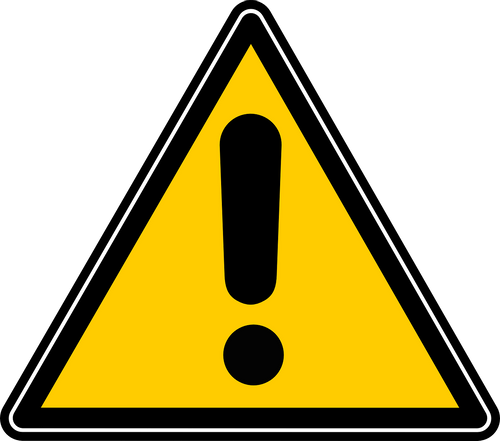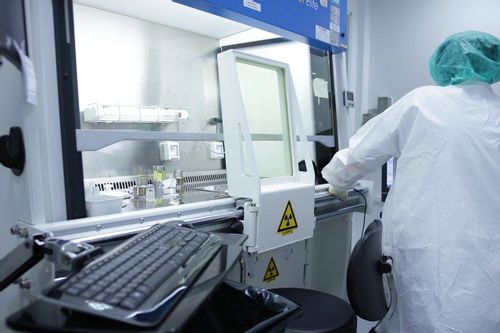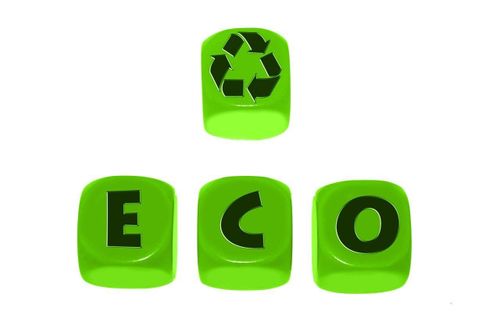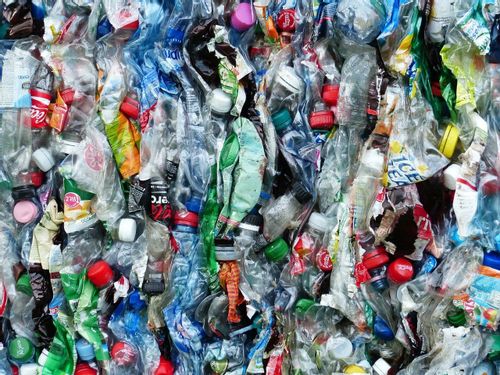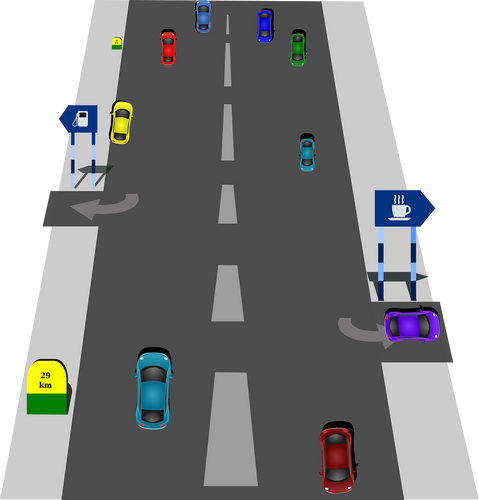Standards Packages
iTeh together with SIST has developed and compiled a comprehensive collection of standard packages to support your standard requirements. Our packages cover an array of content that includes quality management, risk management, road vehicles, machine safety, and much more. With over 200 packages to choose from, you are sure to find a collection to suit your standard needs.
Latest Standards
This document specifies ways in which rare earths can be traced as they move through the supply chain between the separated products to rare earth permanent magnets, or otherwise to be further processed. The documented traceability information is applicable to purchasers, suppliers, and users of rare earth permanent magnets to identify parties in the supply chain who have processed a given shipment of rare earth material, the location of that rare earth material as it passes between supply chain nodes. The documented traceability information is also applicable to supply chain actors and end users who use this information to check the validity of any claims made on the rare earth permanent magnets concerning sustainability, environmental impact, or recycled material content.
- Standard16 pagesEnglish languagesale 15% off
- Draft16 pagesEnglish languagesale 15% off
- Draft16 pagesEnglish languagesale 15% off
This document specifies: — How to uniquely identify Digital Items (and parts thereof); — How to uniquely identify IP related to the Digital Items (and parts thereof), for example abstractions; — How to express the relationship between the two above identifiers; — How to deal with varying levels of functional granularity for Digital Item identifiers; — How to uniquely identify description schemes; — The relationship between Digital Items (and parts thereof) and existing identification systems. Annex C contains a list of relevant identification systems. This is not an exhaustive list and is subject to change over time; — How to express the relationship between two Digital Items. This document does not specify: — New identification systems for the content elements for which identification and description schemes already exist and are in use (e.g. this document does not attempt to replace the ISRC, as defined in ISO 3901, for sound recordings); — Normative description schemes for describing content.
- Standard34 pagesEnglish languagesale 15% off
- Draft34 pagesEnglish languagesale 15% off
- Draft34 pagesEnglish languagesale 15% off
This document specifies a method of determining the characteristic fusion temperatures of ash from hard coal. NOTE Descriptors: fossil fuels, ash, ashes, tests, high temperature tests, determination, and fusibility.
- Standard9 pagesEnglish languagesale 15% off
- Draft10 pagesEnglish languagesale 15% off
- Draft10 pagesEnglish languagesale 15% off
This document specifies calibration methods for a pyranometer using a pyrheliometer as a reference instrument. Three methods are specified in this document. a) Alternating sun and shade method. This method uses a shading disc to alternately shade and unshade a pyranometer to compare with the tracking pyrheliometer. The test pyranometer can be horizontal, on a fixed tilt or tracking alongside the pyrheliometer. b) Continuous sun and shade method. In this method, a shaded calibrated reference pyranometer is used in addition to the reference pyrheliometer. The test pyranometer can be horizontal, on a fixed tilt or tracking alongside the reference pyrheliometer, but the reference pyranometer must be mounted in the same plane as the test pyranometer (most often on the horizontal). c) Collimation tube method. In this method, the test pyranometer is mounted on a solar tracker and is equipped with a collimation tube designed to allow the test pyranometer to have the same geometric view as the reference pyrheliometer for a direct comparison of the two instruments. The methods in this document are applicable for calibration of all pyranometers provided that a proper uncertainty evaluation is performed. Unlike spectrally flat pyranometers, non-spectrally flat pyranometers have a sensitivity that strongly depends on the solar spectrum. Therefore, the calibration result can be valid under a more limited range of conditions. The result of a calibration is the instrument sensitivity accompanied by an uncertainty. This document includes suggestions for uncertainty evaluation.
- Standard44 pagesEnglish languagesale 15% off
- Draft43 pagesEnglish languagesale 15% off
- Draft43 pagesEnglish languagesale 15% off
This document defines the basic terms of functional components and performance indicators commonly used in the area of refuse collection vehicles (RCV). This document also gives classification and requirements for commercial specifications for RCVs. It aims to align with terminology that are used internationally. This standard provides further vocabulary to those defined in ISO 24161. NOTE ‘Refuse’ and ‘waste’ are used interchangeably in this document.
- Standard31 pagesEnglish languagesale 15% off
- Standard34 pagesFrench languagesale 15% off
- Draft31 pagesEnglish languagesale 15% off
- Draft31 pagesEnglish languagesale 15% off
- Draft36 pagesFrench languagesale 15% off
This document specifies a method of determining the total carbon and the total hydrogen in coal and coke, by the Liebig method.
- Standard14 pagesEnglish languagesale 15% off
- Draft14 pagesEnglish languagesale 15% off
- Draft14 pagesEnglish languagesale 15% off
This document specifies a procedure for the use of quadrupole inductively coupled plasma mass spectrometry (ICP-MS), including single-quadrupole instruments and tandem ICP-MS/MS, for analysing test solutions prepared from samples of airborne particulate matter collected as specified in ISO 15202-1. Method development, performance checks and a routine analysis method are specified in this document NOTE 1 Other types of ICP-MS (e.g. magnetic sector) are outside of the scope of this document. Test solutions for analysis by this document are prepared as specified in ISO 15202-2. This document is applicable to the assessment of workplace exposure to metals and metalloids for comparison with limit values (e.g. see EN 689[ REF Reference_ref_21 \r \h 10 08D0C9EA79F9BACE118C8200AA004BA90B0200000008000000110000005200650066006500720065006E00630065005F007200650066005F00320031000000 ] and ASTM E1370[ REF Reference_ref_19 \r \h 8 08D0C9EA79F9BACE118C8200AA004BA90B0200000008000000110000005200650066006500720065006E00630065005F007200650066005F00310039000000 ]). This document is not applicable to the determination of elemental mercury, since mercury vapour is not collected using the sampling method specified in ISO 15202-1. The procedure specified in this document is suitable for the assessment of exposure against the long-term exposure limits for most of the metals and metalloids for which occupational exposure limit values have been set, when sampling at a typical flow rate of at least 2 l min−1 for sampling times in the range 0,25 h to 8 h and for the assessment of exposure against the short-term exposure limits, where applicable. NOTE 2 The procedure is subject to no significant spectral interferences (see Clause A.3), provided that suitable analytical isotopes are used. However, inadequate matrix-matching can adversely affect results.
- Standard34 pagesEnglish languagesale 15% off
- Draft36 pagesEnglish languagesale 15% off
- Draft36 pagesEnglish languagesale 15% off
This document specifies general and detailed requirements for bellows used in space systems. It establishes requirements regarding material, design, analysis, fabrication, material, testing, inspection, and operation for space use. This document is applicable to metallic bellows which are used as pressure bearing components and are integrated into a pressure system. This document is not applicable to engine bellows or valve bellows.
- Standard15 pagesEnglish languagesale 15% off
- Draft15 pagesEnglish languagesale 15% off
- Draft15 pagesEnglish languagesale 15% off
This document specifies a method for the gas chromatographic determination of menthol in the total particulate matter (TPM) of mentholated cigarette mainstream smoke with a smoking regime according to ISO 3308 (standard smoking regime). The smoking of cigarettes and the collection of TPM from the mainstream smoke are carried out in accordance with ISO 4387 with some exceptions (see Annex A). Encapsulated menthol in specific products can lead to specific handling not described in this document.
- Standard9 pagesEnglish languagesale 15% off
- Draft9 pagesEnglish languagesale 15% off
- Draft9 pagesEnglish languagesale 15% off
This document specifies methods to determine 226Ra by alpha spectrometry in supply water, drinking water, rainwater, surface and ground water, marine water, as well as cooling water, industrial water, domestic, and industrial wastewater after proper sampling, handling and test sample preparation. The detection limit depends on the sample volume, the instrument used, the background count rate, the detection efficiency, the counting time and the chemical yield. The detection limit of the methods described in this document, using currently available alpha spectrometry apparatus, is equal to or lesser than 3 mBq·l−1 (or mBq·kg−1), which is lower than the WHO criteria for safe consumption of drinking water (1 Bq·l−1)[ REF Reference_ref_12 \r \h 4 08D0C9EA79F9BACE118C8200AA004BA90B0200000008000000110000005200650066006500720065006E00630065005F007200650066005F00310032000000 ]. This value can typically be achieved with a counting time of 48 h for a test sample volume of 40 ml. The method described in this document is applicable in the event of an emergency situation. Filtration of the test sample is necessary for the methods described in this document if suspended solids are present. The analysis of 226Ra adsorbed to suspended matter is not covered by this method, because it requires a mineralization step. In this case, the measurement is made on the different phases obtained. The final activity is the sum of all the measured activity concentrations. It is the user’s responsibility to ensure the validity of this test method for the water samples tested.
- Standard31 pagesEnglish languagesale 15% off
- Standard31 pagesFrench languagesale 15% off
- Draft31 pagesEnglish languagesale 15% off
- Draft31 pagesEnglish languagesale 15% off
- Draft32 pagesFrench languagesale 15% off
IEC 60794-1-124:2025 contains test procedures, referred to as Method E24, for evaluating the behaviour of microduct cabling (microduct optical cable, fibre unit or hybrid cable etc.) when blown into a microduct or protected microduct. This document describes two blowing track layouts: Method A consists of two mandrels and two long straight sections in between (same curvature). Method B consists of 3 mandrels. The middle mandrel forces the cable to experience both left- and right-hand bending, which is a feature of any realistic blowing route. In addition, this document describes an optional procedure to check the capability of blowing out an installed cable. This first edition cancels and replaces Method E24 of the first edition of IEC 60794‑1‑21 published in 2015 and Amendment 1:2020. This edition constitutes a technical revision. This edition includes the following significant technical changes with respect to the previous edition: a) addition of a blowing route (see Figure 2) which includes a change in the direction of curvature. This was achieved by introducing a third mandrel; b) addition of Annex A (Figure A.1 which shows a practical implementation of the blowing route; c) addition of Annex B which describes the so-called Crash Test; d) addition of Annex C which describes a cable blowing out procedure.
- Draft16 pagesEnglish languagesale 10% offe-Library read for1 day
This document is for shock detectors installed in buildings to detect the shock or series of shocks due to a forcible attack through a physical barrier (for example doors or windows). It specifies four security grades 1-4 (in accordance with EN 50131-1), specific or non-specific wired or wire-free shock detectors and uses environmental Classes I-IV (in accordance with EN 50130-5). This document does not include requirements for detectors intended to detect penetration attacks on safes and vaults for example by drilling, cutting or thermal lance. This document does not include requirements for shock detectors intended for use outdoors. A shock detector needs to fulfil all the requirements of the specified grade. Functions additional to the mandatory functions specified in this document can be included in the shock detector, providing they do not adversely influence the correct operation of the mandatory functions. This document does not deal with requirements for compliance with regulatory directives, such as EMC-directive, low-voltage directive, etc., except that it specifies the equipment operating conditions for EMC- susceptibility testing as required by EN 50130-4. This document does not apply to system interconnections.
- Draft43 pagesEnglish languagesale 10% offe-Library read for1 day
This document specifies requirements for the protective provisions relating to electrical safety in fixed installations associated with AC and/or DC traction systems and to any installations that can be endangered by the electric traction power supply system. This also includes requirements applicable to vehicles on electrified lines. It also applies to all aspects of fixed installations which are necessary to ensure electrical safety during maintenance work within electric traction power supply systems. This document applies to new electric traction power supply systems and major revisions to electric traction power supply systems for: a) railways; b) guided mass transport systems such as 1) tramways, 2) elevated and underground railways, 3) mountain railways, 4) trolleybus systems, 5) electric traction power supply systems for road vehicles, which use an overhead contact line system, and 6) magnetically levitated systems, which use a contact line system; c) material transportation systems. This document does not apply to: a) electric traction power supply systems in underground mines, b) cranes, transportable platforms and similar transportation equipment on rails, temporary structures (e.g. exhibition structures) in so far as these are not supplied directly or via transformers from the contact line system and are not endangered by the electric traction power supply system, c) suspended cable cars, d) funicular railways, e) existing vehicles. This document does not specify working rules for maintenance. The requirements within this document related to protection against electric shock are applicable to persons only.
- Draft12 pagesEnglish languagesale 10% offe-Library read for1 day
This standard deals with the safety of appliances for generation of directly inhalable aerosols, their rated voltage being not more than 250 V for single-phase appliances, and other appliances including direct current (DC) supplied appliances and battery-operated appliances.
- Draft18 pagesEnglish languagesale 10% offe-Library read for1 day
This document specifies requirements for protective provisions against the effects of stray currents, which result from the operation of DC electric traction power supply systems. As several decades' experience has not shown evident corrosion effects from AC electric traction power supply systems, this document only deals with stray currents flowing from a DC electric traction power supply system. This document applies to all metallic fixed installations which form part of the traction system, and also to any other metallic components located in any position in the earth, which can carry stray currents resulting from the operation of the railway system. This document applies to all new DC lines and to all major revisions to existing DC lines. The principles can also be applied to existing electrified transportation systems where it is necessary to consider the effects of stray currents. This document does not specify working rules for maintenance but provides design requirements to allow maintenance. The range of application includes: a) railways, b) guided mass transport systems such as: 1) tramways, 2) elevated and underground railways, 3) mountain railways, 4) magnetically levitated systems, which use a contact line system, and 5) trolleybus systems, c) material transportation systems. This document does not apply to a) electric traction power supply systems in underground mines, b) cranes, transportable platforms and similar transportation equipment on rails, temporary structures (e.g. exhibition structures) in so far as these are not supplied directly from the contact line system and are not endangered by the electric traction power supply system, c) suspended cable cars, d) funicular railways.
- Draft10 pagesEnglish languagesale 10% offe-Library read for1 day
This document is applicable to lead-acid batteries with a nominal voltage of 12 V, used primarily as power source for the starting of internal combustion engines (ICE), lighting and also for auxiliary equipment of ICE vehicles. These batteries are commonly called "starter batteries". Batteries with a nominal voltage of 6 V are also included in the scope of this document. All referenced voltages need to be divided by two for 6 V batteries. The batteries under the scope of this document are used for micro-cycle applications in vehicles which can also be called Start-Stop (or Stop-Start, idling-stop system, micro-hybrid or idle-stop-and-go) applications. In cars with this special capability, the internal combustion engine is switched off during a complete vehicle stop, during idling with low speed or during idling without the need of supporting the vehicle movement by the internal combustion engine. During the phases in which the engine is switched off, most of the electric and electronic components of the car need to be supplied by the battery without support of the alternator. In addition, in most cases an additional regenerative braking (recuperation or regeneration of braking energy) function is installed. The batteries under these applications are stressed in a completely different way compared to classical starter batteries. Aside of these additional properties, those batteries need to crank the ICE and support the lighting and also auxiliary functions in a standard operating mode with support of the alternator when the internal combustion engine is switched on. All batteries under this scope need to fulfil basic functions, which are tested under application of EN 50342 1:2015. This document is applicable to batteries for the following purposes: - Lead-acid batteries of the dimensions according to EN 50342 2 for vehicles with the capability to automatically switch off the ICE during vehicle operation either in standstill or moving (“Start-Stop”); - Lead-acid batteries of the dimensions according to EN 50342 2 for vehicles with Start-Stop applications with the capability to recover braking energy or energy from other sources. This document is not applicable to batteries for purposes other than mentioned above, but it is applicable to EFB delivered in dry-charged conditions according to EN 50342 1:2015, Clause 7. NOTE The applicability of this document also for batteries according to EN 50342 4 is under consideration.
- Draft29 pagesEnglish languagesale 10% offe-Library read for1 day
IEC 63366:2025 defines product category rules (PCR) for electrical and electronic products and systems (EEPS) to develop Type III environmental declarations for electrical and electronic products and systems (EEPS). It specifies the process and requirements on how to conduct life cycle assessment (LCA) in the context of environmental declarations. This document provides common rules for: a) LCA, including the requirements for developing default scenarios; b) the LCA report; c) the development of PSR. This document provides further guidelines for environmental declarations. The LCA principles and framework are based on ISO 14040 and ISO 14044, and are therefore out of scope of this document. PCR is complemented by additional product-specific rules (PSR), which further define, for example, functional units and default scenarios in the product-specific context. Therefore, this document also provides guidance on how to develop PSR in corresponding technical committees. This document has the status of a horizontal publication in accordance with IEC Guide 108. In accordance with IEC Guide 108, this generic essential horizontal standard is intended for use by product committees as a starting point in preparing PSR standards. Specific requirements developed by product committees in PSR standard take precedence over requirements in this standard. When there is no PSR available in a product committee, this generic essential horizontal standard could be applied by LCA practitioners with recorded complementary specifications.
- Draft50 pagesEnglish languagesale 10% offe-Library read for1 day
This document specifies requirements for the protective provisions relating to electrical safety in fixed installations, when it is reasonably likely that hazardous voltages or currents will arise for people or equipment, as a result of the mutual interaction of AC and DC electric power supply traction systems. It also applies to all aspects of fixed installations that are necessary to ensure electrical safety during maintenance work within electric power supply traction systems. The mutual interaction can be of any of the following kinds: - parallel running of AC and DC electric traction power supply systems; - crossing of AC and DC electric traction power supply systems; - shared use of tracks, buildings or other structures; - system separation sections between AC and DC electric traction power supply systems. The scope is limited to galvanic, inductive and capacitive coupling of the fundamental frequency voltages and currents and their superposition. This document applies to all new lines, extensions and to all major revisions to existing lines for the following electric traction power supply systems: a) railways; b) guided mass transport systems such as: 1) tramways, 2) elevated and underground railways, 3) mountain railways, 4) magnetically levitated systems, which use a contact line system, 5) trolleybus systems, and 6) electric traction power supply systems for road vehicles, which use an overhead contact line system; c) material transportation systems. The document does not apply to: a) electric traction power supply systems in underground mines; b) cranes, transportable platforms and similar transportation equipment on rails, temporary structures (e.g. exhibition structures) in so far as these are not supplied directly or via transformers from the contact line system and are not endangered by the electric traction power supply system for railways; c) suspended cable cars; d) funicular railways; e) procedures or rules for maintenance. The rules given in this document can also be applied to mutual interaction with non-electrified tracks, if hazardous voltages or currents can arise from AC or DC electric traction power supply systems.
- Draft4 pagesEnglish languagesale 10% offe-Library read for1 day
IEC 63522-29:2025 This part is used for testing the appropriate severities and conditions for measurements and tests designed to assess the ability of DUTs to perform under expected conditions of transportation, storage and all aspects of operational use. It specifies how to ensure that the capacitances formed by parts of a relay do not exceed specified limits.
- Draft8 pagesEnglish languagesale 10% offe-Library read for1 day
IEC 60974-4:2025 specifies test procedures for periodic inspection and, after repair, to ensure electrical safety. These test procedures are also applicable for maintenance. This document is applicable to power sources for arc welding and allied processes designed in accordance with IEC 60974-1 or IEC 60974-6. Stand-alone ancillary equipment designed in accordance with other parts of IEC 60974 can be tested in accordance with relevant requirements of this part of IEC 60974. This document includes requirements for battery-powered arc welding power sources, which are given in Annex D. NOTE 1 The welding power source can be tested with any ancillary equipment fitted that can affect the test results. This document is not applicable to testing of new power sources or engine-driven power sources. NOTE 2 For a power source not built in accordance with IEC 60974-1, see Annex C. This fourth edition cancels and replaces the third edition published in 2016. This edition constitutes a technical revision. This edition includes the following significant technical changes with respect to the previous edition: - examples for the measurements in respect of EN 50699, - consideration of measuring equipment in respect of IEC 61557 series, - more determinations of no-load voltage for welding equipment built according to IEC 60974-1:1998 and IEC 60974-1:1998/AMD1:2000 or earlier, - new Annex D providing additional information to be considered when testing battery-powered welding power sources and connected chargers.
- Draft23 pagesEnglish languagesale 10% offe-Library read for1 day
Benefits

Full Standards Solution
Our catalog includes not only latest standards but also full meta information about related standardization project lifecycle.

Cost Effective
Our PRICE MATCH GUARANTEE policy with multi-level volume discounts gives our clients the best option in the market. In addition, you can get access to the standards for 3, 10, or 30 days.

Stay Notified
Get alerted to the latest revisions and new standards in the Weekly Newsletter. Standards are constantly changing. Don’t miss a revision that can impact your business.
About Us
iTeh Inc is a software development and IT consulting team of professionals who provide consulting, development and implementation of solutions for all types of businesses.
In cooperation, with the Slovenian Institute of Standardization (SIST), we create a unique solution that covers all aspects of the lifecycle of Standardization organizations. iTeh Standards is a part of the solution that helps SIST to provide and sell their products to Customers.
iTeh Standards Store is an evolving project, our goal is to build long-term relationships with our customers. We believe in delivering quality services to solve our customers' challenges and define success by exceeding our customers' expectations. We are always ready to listen and our experience allows us to provide our customers with helpful effective suggestions. You can contact us by email.
We are committed to providing the best possible experience for our customers.
Compliance with international standards is increasingly becoming one of the key competitive advantages in the global market. Our company creates all conditions for the most comfortable implementation of new documents and norms in the processes carried out by your organization. Some of the key advantages of working with us are:
- Cost-effective - multi-level discounts and permanent updates of the functions give our clients the best option on the market.
- e-Library - access to standards for a period of time of your choice. It is a cost-effective solution for keeping updated with the newest standards.
- Company-wide documents - create a company account and connect all employees with access to purchased standards, e-Library documents, and packages.
- All in one spot - all purchased standards are kept in one place with controlled access by the account administrator.
- Client-centric - providing quality consulting is the prerogative and incentive to create new products that accompany your success and scale.
- 24 / 7 client support
We are dedicated to building mutually beneficial and long-term relationships with our clients. That is why our team focuses on creating services to help our customers develop and achieve new productive results.










